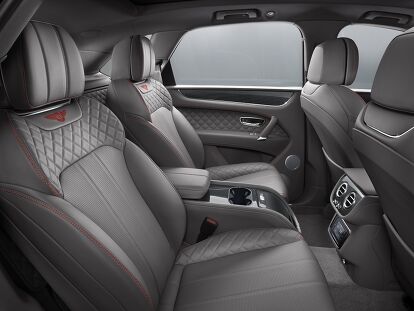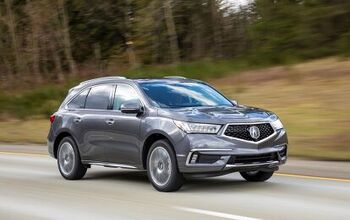The Bentley Bentayga is Now Available With a 542 HP Twin Turbo V8


The Bentley Bentayga V8 has made its official debut, offering a less powerful and likely less expensive alternative to the W12 version currently on sale.
The Bentayga V8 features VW Group’s 4.0-liter twin-turbocharged V8, which is making 542 horsepower and 568 lb-ft of torque. The engine is paired with a ZF eight-speed automatic transmission, which sends power to all four wheels through Bentley’s permanent all-wheel drive system. The British brand claims a 0-60 mph time of 4.4 seconds and a top speed of 180 mph, which compares with figures of 4.0s and 187 mph for the W12 model.
Carbon ceramic brakes also appear on the V8 Bentayga – a first for the nameplate. The braking system is the largest and most powerful ever fitted to a Bentley, and the largest front brake system available on any production car. The rotors measure 17.3 inches in the front and 14.5 inches in the rear and thanks to 10-piston front calipers, provide more than 6,000 Nm of braking force. The standard brakes are made of iron and are joined by Tornado Red brake calipers.
SEE ALSO: Bentley Bentayga Plug-In With Zero Emission Drive Mode Coming in 2018
Another first for the Bentayga V8 are 22-inch black painted five-spoke wheels, which are one of 11 wheel options available for the SUV. There’s also a black and chrome grille and a black-finish quad-tip exhaust, which further set the V8 model apart from the more luxury-focused W12 model. The interior also gets first-time equipment in the way of carbon-fiber trim, available wood or hide-trimmed steering wheels and available ‘Cricket Ball’ brown leather.
Price figures and availability dates for the Bentayga V8 are not yet available.

Sam McEachern holds a diploma in journalism from St. Clair College in Windsor, Ontario, and has been covering the automotive industry for over 5 years. He conducts reviews and writes AutoGuide's news content. He's a die-hard motorsports fan with a passion for performance cars of all sorts.
More by Sam McEachern









































Comments
Join the conversation